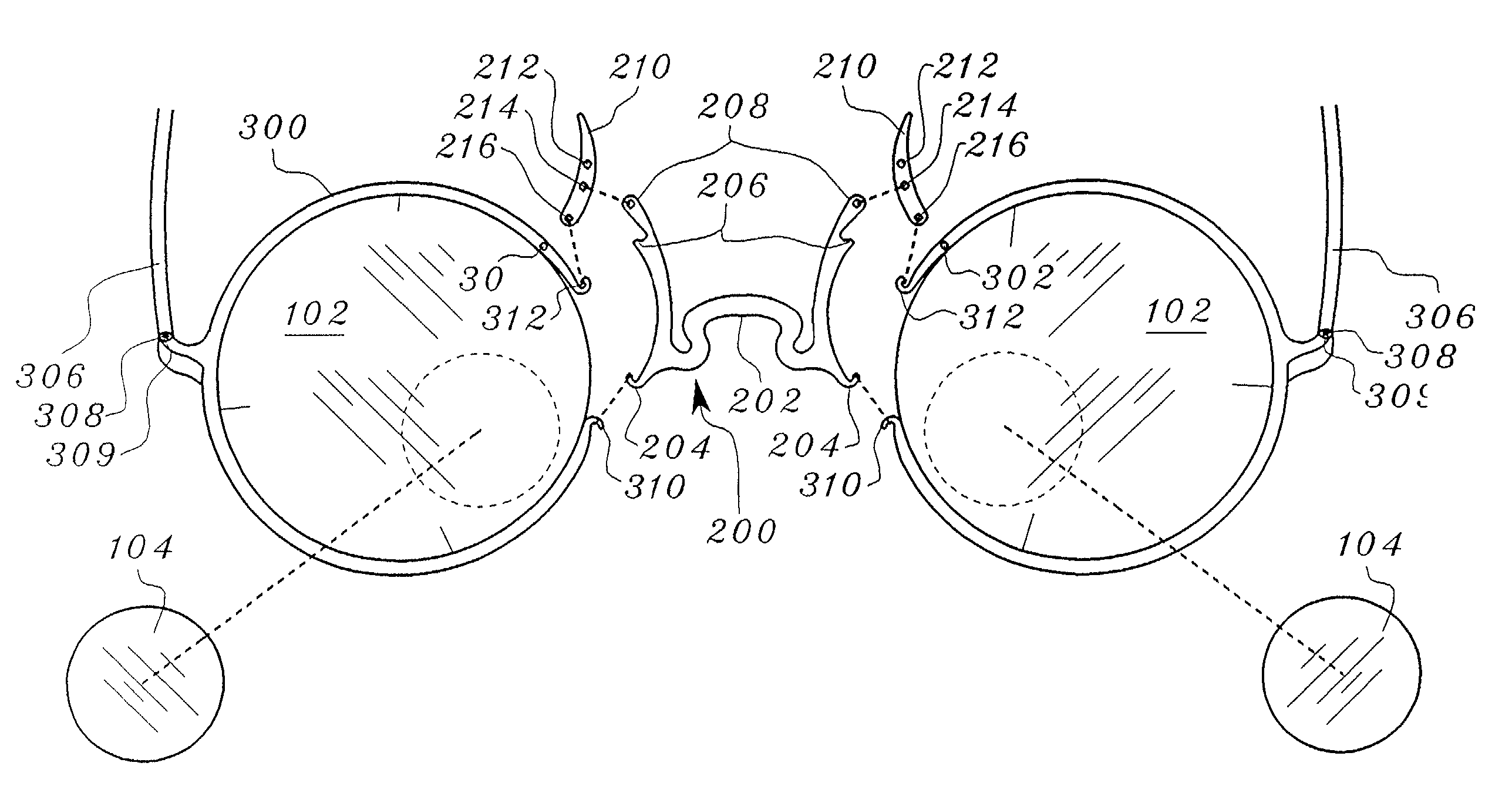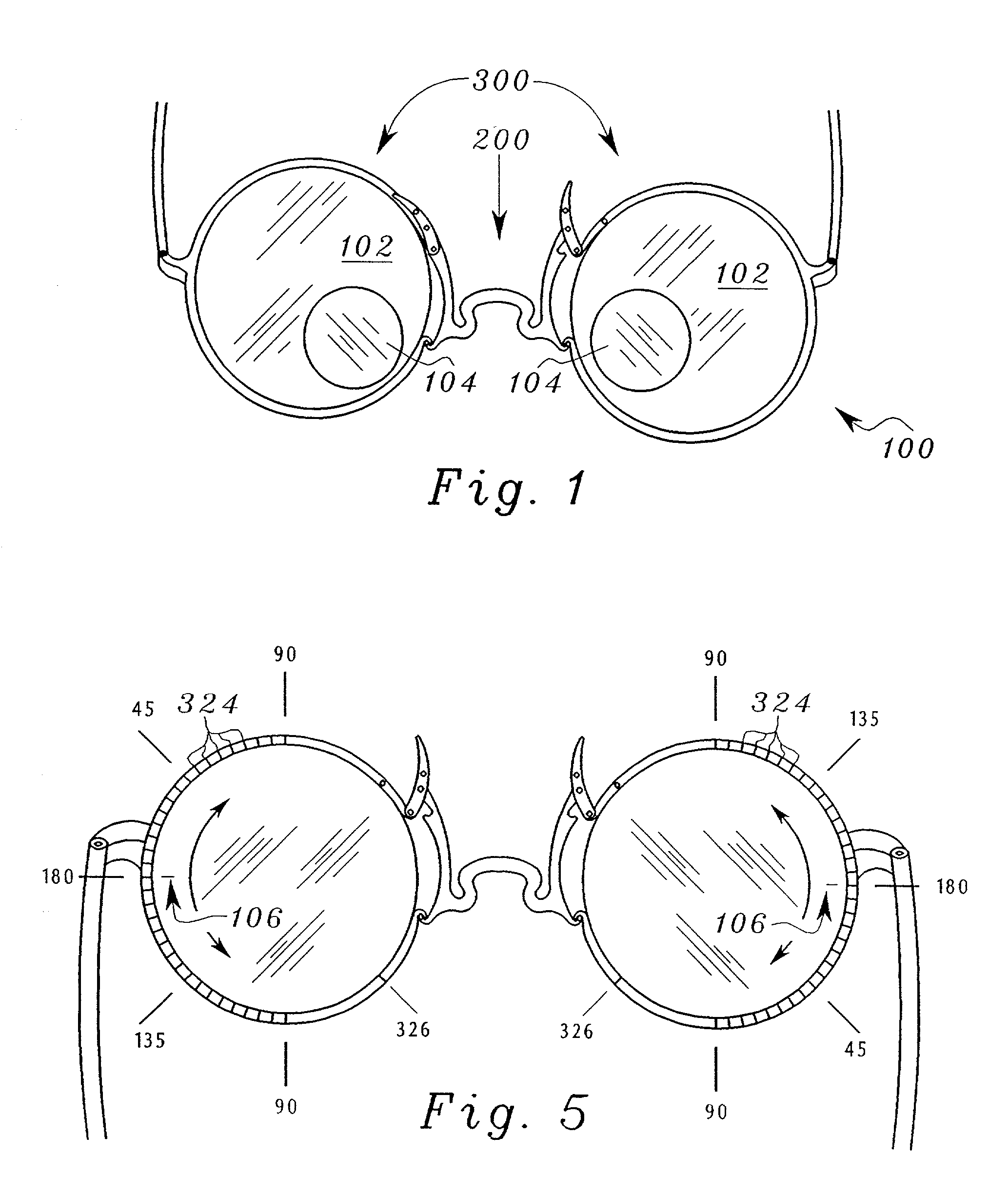Interchangeable lens eyeglass system with interchangeable nosepiece
a technology of interchangeable lenses and eyeglasses, which is applied in the direction of spectacles/goggles, instruments, spectacles/goggles, etc., can solve the problems of affecting the quality of eyeglasses, the inability to correct errors made during the manufacturing process, and the process must start anew, so as to achieve the effect of correcting the pupillary distan
- Summary
- Abstract
- Description
- Claims
- Application Information
AI Technical Summary
Benefits of technology
Problems solved by technology
Method used
Image
Examples
Embodiment Construction
[0013] FIG. 1 shows eyeglasses 100 with two lenses 102 and two optional bifocal segments 104. Lenses 102 are secured by the tension created around eyewire 300 when clasp 210 is closed (see FIG. 2). Bifocal segments 104, if required, may be secured to lenses 102 by an adhesive.
[0014] Referring to FIG. 2, nosepiece 200 contains nose rest 202, nosepiece hooks 204, nosepiece arms 206, and nosepiece holes 208. Nose rest 202 is adapted to rest on the patient's nose (not shown) and is not limited to the style and type described by the preferred embodiment. Nose rest 202 may vary in width and design as determined by those skilled in the art. Nosepiece hook 204 projects downwardly from nose rest 202 and couples with eyewire lower hook 310. Projecting upwardly from nose rest 202, nosepiece 200 contains nosepiece arm 206, extending outwardly from nosepiece 200. Nosepiece arm 206 is shaped to accommodate eyewire upper hook 312 when clasp 210 is moved into the closed position. Nosepiece 200 exte...
PUM
 Login to View More
Login to View More Abstract
Description
Claims
Application Information
 Login to View More
Login to View More - R&D
- Intellectual Property
- Life Sciences
- Materials
- Tech Scout
- Unparalleled Data Quality
- Higher Quality Content
- 60% Fewer Hallucinations
Browse by: Latest US Patents, China's latest patents, Technical Efficacy Thesaurus, Application Domain, Technology Topic, Popular Technical Reports.
© 2025 PatSnap. All rights reserved.Legal|Privacy policy|Modern Slavery Act Transparency Statement|Sitemap|About US| Contact US: help@patsnap.com



